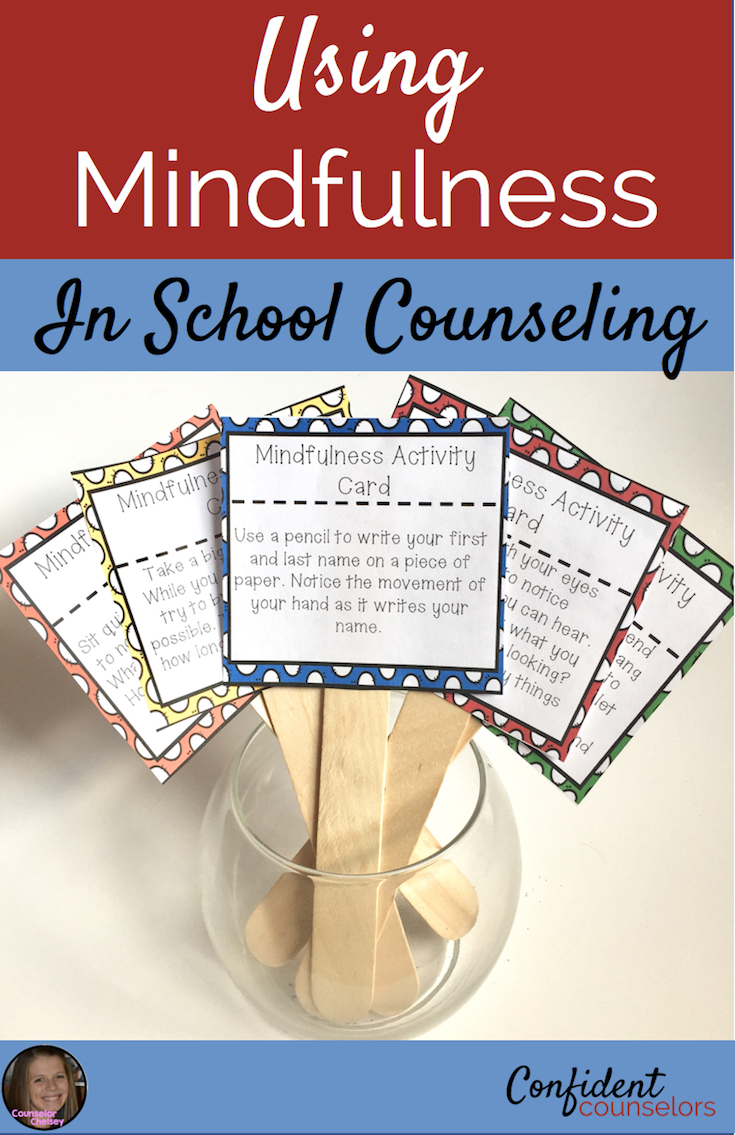Mindfulness is popping up everywhere nowadays. As a school based counselor, teaching students to focus on the present moment and acknowledge their thoughts and feelings in a non-judgmental way seems like a dream. Better yet, there is research to prove that it can decrease behavioral problems, decrease symptoms of stress, anxiety and depression, and increase working memory capacity.
If you are like I was, you think the idea of using mindfulness in your school counseling program is great, but then you ask yourself how. How do I introduce and teach this complex concept to my little learners? Is there a way to integrate it into the lessons and activities I am already doing? The task seems daunting. Thankfully, there are many resources out there to help you incorporate this important practice into the groups and lessons you do every day!
Videos for Mindfulness
Videos are one of my favorite tools to use in my counseling lessons. They are a great way to get students interested and engaged in what they are learning. Fortunately, there are many videos out there that can help you explain mindfulness and how it works. One of my favorites below shows kids from a school in New Zealand sharing about what mindfulness is.
I like this video because it gives students a broad picture of what mindfulness is and they get to see that it is something kids can practice.
For older kids, this video goes into detail about how our brain functions and how mindfulness can help train the brain to be calm.
If you are looking for a way to use videos to help students practice mindfulness, ClassDojo has these videos that kids love and that will help your students to enjoy the present moment. These videos are a great way to introduce the concept of mindfulness in a way that your students will understand!
Books for Mindfulness
When introducing the concept of mindfulness to students, it can be helpful to use picture books. Two of my favorite are The Lemonade Hurricane by Licia Morelli and Take The Time: Mindfulness For Kids by Maud Roegiers.
I love these books because students learn what mindfulness actually is and how they can practice it. They are a great way to begin your mindfulness lessons and introduce the concepts of being in the present, deep breathing and noticing your thoughts and feelings.
Guided Meditation Scripts
 Guided meditation scripts help students to refocus and calm their minds. They can be read out loud and students can follow along. I love to use these scripts from my Teachers Pay Teachers store at the beginning of lessons to get students ready to learn, after a fun activity when the students are struggling to “come back” to the lesson, and/or at the end of the lesson to help the students with the transition to the next activity.
Guided meditation scripts help students to refocus and calm their minds. They can be read out loud and students can follow along. I love to use these scripts from my Teachers Pay Teachers store at the beginning of lessons to get students ready to learn, after a fun activity when the students are struggling to “come back” to the lesson, and/or at the end of the lesson to help the students with the transition to the next activity.
When you first start using guided meditations, students may need some time to get used to the idea. However, I have found that with consistency, even some of my most reluctant students end up begging for them!
Deep Breathing Strategies
One key mindfulness strategy is deep breathing. Deep breathing is a powerful way to slow down the body and brain, and help us to feel calm and clear. You can use deep breathing strategies with your students when they are facing strong emotions, and as a start and finish to your lessons. Here are some of my favorite deep breathing strategies:
- 4-7-8 Breathing – This well-known breathing technique is very helpful for relaxing the body and brain. To perform this type of breath, breathe in through your nose for four seconds. Then, hold your breath for 7 seconds and exhale for 8 seconds. Repeat as needed. I love this strategy because it is quick and easy to remember, meaning it is easy for students to use on their own!
- Smell A Candle, Blow It Out – This visual is great for helping your students who are just beginning to learn about deep breathing. In this exercise, students will breathe in through their noses, as they pretend that they are smelling a candle. Next, the students will breathe out through their mouths, as they pretend that they are blowing it out. Students can repeat as needed.
- Belly Breathing – In this exercise, students will really focus on the presence of the breath in their belly. Students will breathe deeply, in through the nose and out through the mouth, as they notice the way that their stomach moves. For added visual effect, I like to have the students gently place their hands on their stomachs to watch it rise and fall.
Brain Breaks
For older students, or for students who have well-developed self-regulation skills, I love using mindfulness activities as brain breaks. When students feel overwhelmed, they can take a break and perform a short mindfulness activity.

I place these cards in a jar and keep them in my office. If free time during a lesson, I will allow students to go choose a card as needed. If I notice that a student is starting to struggle, I may suggest that they go visit the jar. However, I never force them to as I don’t want it to be seen as a punishment. I love using these because they are short and sweet. They can be done quickly, and they are also easy for the students to remember. I have had many students come back and tell me about a mindfulness activity they used at home that was on one of the brain break cards!
Mindfulness can benefit your students in so many ways, and it doesn’t have to be intimidating! There are many resources available to help you integrate mindfulness into your school counseling program. Do you have any mindfulness resources that you love? Let me know about them in the comments section!




